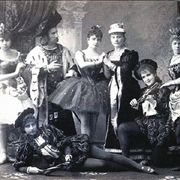Dance History - Dance Origins
History of dance is filled with interesting events that shaped its foundations, inventors that created new styles, periods of time when dance and music were put in the forefront of innovations, which all enabled it to become the popular social pastime of today.
History of Dance
History of dance closely follows the development of human race. Since the earliest times of our existence, far before the creation of first modern civilizations, dance served as an irreplaceable way of expressing human thought and emotion. As our civilization traveled through millennia, dance was modified to the point of being popular means of expression, health, communication and competition.
Elizabethan Dance
During the period of time in 16th century that is today remembered as an Elizabethan Era, dance and music received unprecedented attention, advancement and refinement that allowed it to become one of the most popular ways for socialization and exercise, and a foundation for the creation of all modern dances.
Dance in Religion and Mythology
Connection between dance and religion and myths can be observed from the dawn of our civilization to the modern times. Here you can find out how dance influenced the religion ceremonies, became storytelling device in describing tales of gods and myths, or in some cases become very integral part of some religions.
History of Ballroom Dancing
History of ballroom dancing started with the rise of European renaissance in 16th century. Ever since then, tradition of ballroom dancing expanded across entire world, pushing along its path creation of many popular dances that are in use today.
History of Waltz
Ever since it first appeared on the ballrooms of Venice, Waltz managed to revolutionize the way we dance. Here you can read detailed accounts of the way waltz was created, moved from folk roots to royal ballrooms, and helped to kickstart new era of social dances and music styles.
History of Ballet
Ballet is a formal dance technique combined with costumes, scenery, and music. Ballet integrated dance, music, stage design and poetry to make a dramatic storyline. It developed under the aristocratic influence as a formalized form of dance. At first its roll was a virtually component of the opera. In a time, it was formalized and codified, and there were founded popular ballet stages all over the world.






